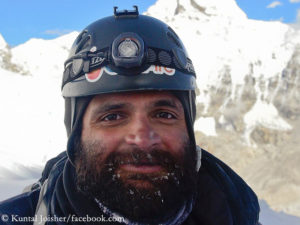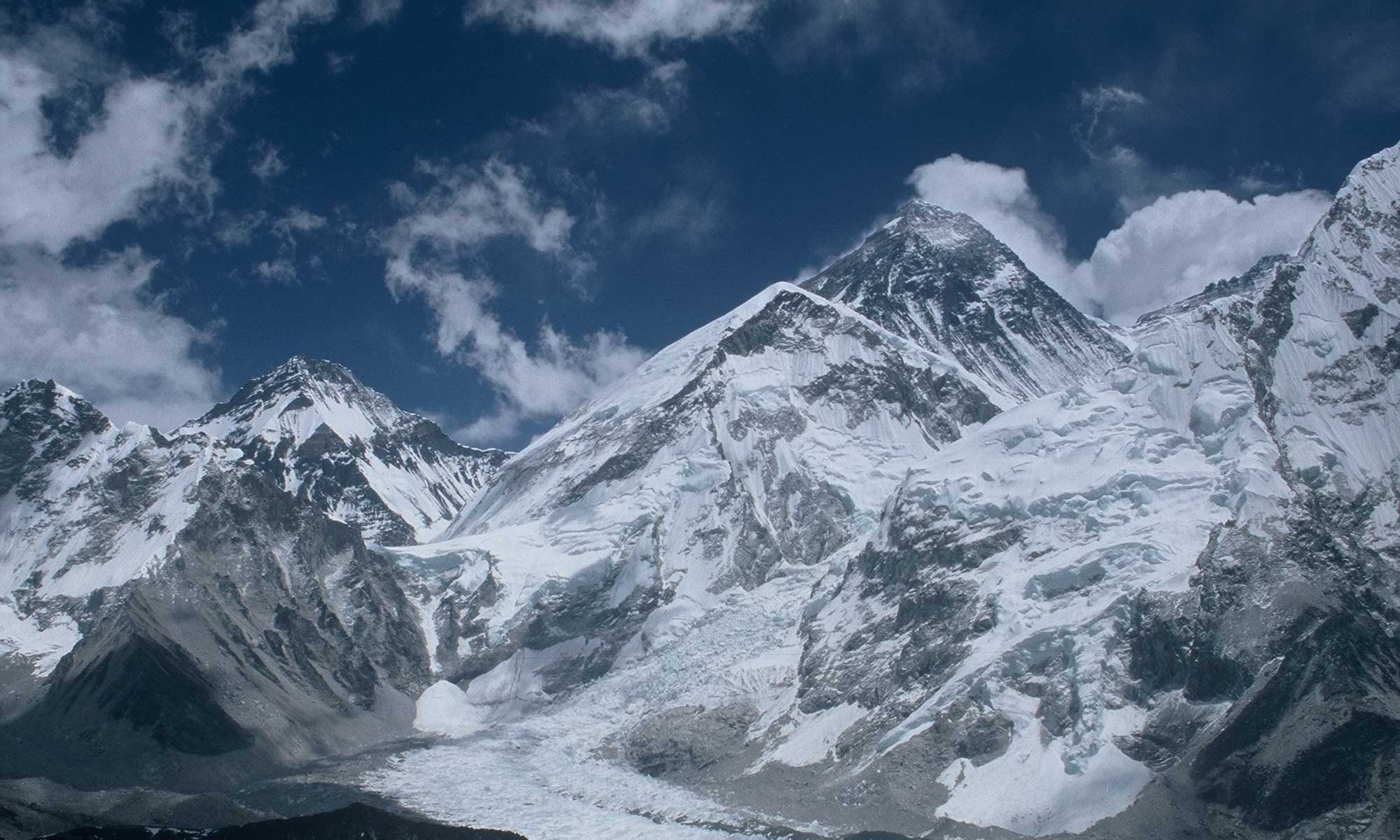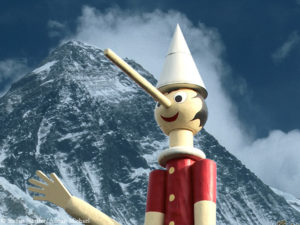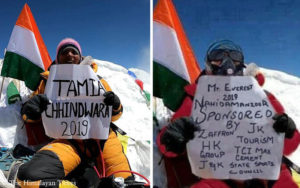Oh, if only all the Everest climbers were Pinocchios! Then it would be very easy to distinguish the liars from those who tell the truth. We’d just have to watch – as with the legendary title character of Carlo Collodi’s children’s book – if their noses had become longer, and we’d have caught the culprits. Also this spring some Everest climbers would have got longer noses.
The Indian female climber Vikas Rana and her male compatriots Shobha Banwala and Ankush Kasana claimed to have reached the highest point at 8,850 metres at 10.30 a.m. on 26 May. According to the newspaper “The Himalayan Times”, however, the trio was sighted more than 3,300 meters lower only two hours later: back at base camp. To do this, they would have had to get wings. Other climber reported that the trio did not make it above Camp 3 at about 7,150 meters. On 26 May, a strong wind blew on the summit of Everest. Only a day later did a larger team reach the highest point again.
Forgery by Photoshop
There is also a question mark behind the reported first Everest summit success of a woman from the Indian state of Kashmir. The supposed summit picture, which the 26-year-old Nahida Manzoor presented to the Nepalese Ministry of Tourism, turned out to be a rather amateurish Photoshop fake of a summit photo taken by another Indian mountaineer. Manzoor described the press reports as “false propaganda”, saying that she could prove that she had been on the summit on 22 May.
On this point the Indian received support from the expedition operator Transcend Adventures, with whom she was travelling. There are eyewitnesses for Manzoor’s summit success, the company said in a statement, adding that the Indian mountaineer Sharad Kulkami climbed only a few meters behind her and saw her at the highest point. “She or her Sherpa has not taken photo on the summit due to the reasons best known to them,” Transcend Adventures cautiously distanced themselves from their client: “We were neither informed nor aware of the fact by what means Ms. Nahida Manzoor has obtained her summit certificate.”
Without her Sherpa on the summit?
Yesterday Manzoor presented on Facebook her own version of what happened on Everest: Due to the heavy traffic in the summit area (on that day Nirmal Purja took his picture of the queue on the Everest summit ridge) oxygen had become scarce for her and her Sherpa, she said. According to her words her Sherpa decided to give her his slightly fuller oxygen bottle and let her ascend alone the last part from the Hillary Step to the summit. At 9.30 a.m. she arrived at the top, didn’t stay long, but quickly descended back to her Sherpa, writes Nahida: “I for a fact did not click any picture of myself at the summit and I do not personally know anyone who were taking pictures of me at the summit.”
Because her summit certificate had been delayed, she travelled to Nepal again on 12 June, says Manzoor, claiming that in Kathmandu she was then sent the supposed summit picture. “In sheer excitement I did not cross check the picture nor did I try to verify the source,” says Manzoor adding that, instead, she passed it on to the authorities in the hope of quickly obtaining the summit certificate: “I have not faked my summit, I am a true mountaineer at my soul and would never lie about such a thing.”
Unfortunately, there is no Pinocchio test with which we could easily see if she is telling the truth. But with the rush that prevailed at the summit on 22 May, it should be possible to find a picture on which Manzoor can be seen – if she was at the top.
“No honest climbing culture”

The case is reminiscent of 2016, when the Indian couple Dinesh and Tarakeshwari Rathod obtained their Everest certificates with manipulated images. Later the certificates had been revoked and they had been banished from all mountains of Nepal for ten years.
Kuntal Joisher, one of India’s best-known mountaineers – he has scaled three eight-thousanders so far: Manaslu (2014), Everest (2016) and Lhotse (2018) – expressed his frustration in a Facebook commentary on the new events: “I think we as seniors of the Indian climbing community have failed in our outreach efforts in creating a positive honest climbing culture. We all need to work harder and outreach harder and create an Everest scene in India which everyone would be proud of.”



